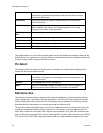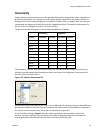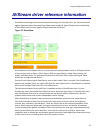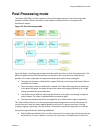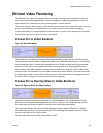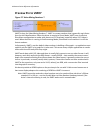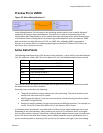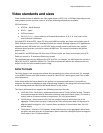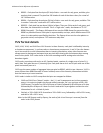
Osprey 240e/450e User Guide
ViewCast 61
Post-Processing mode
The Osprey 240/450e 4.5 driver operates in Post-Processing mode only. Post-Processing mode
enables a number of filters, transforms, and renderers within the driver, and supports the
SimulStream option.
Figure 54. Post-Processing mode
Figure 54 shows a possible graph of video data flow within the driver in Post-Processing mode. This
particular graph assumes that SimulStream is activated so that more than two video pins are
possible. Four video output pins are represented by the pale yellow round rectangles:
The upper pin produces scaled and/or cropped I420 video, with a logo and Closed Captions
rendered on the video.
The second pin produces scaled and/or cropped YUY2 video with a logo but no captioning.
In this particular graph, the upper two pins are scaled and cropping identically, so a single
scaling operation can service both pins.
The third pin has a different scale/crop specification, so its video runs through a separate
scaler/cropper. The video is captioned and converted to Rgb15.
The lower pin produces unscaled, uncropped D1 YUY2 video with no logo or captioning.
The video routed to all pins is in this example deinterlaced and gamma-corrected. Deinterlace or
inverse telecine if used are always applied globally to all pins, as is gamma correction. Scaling,
cropping, logoing, captioning, and color format conversion are performed separately for each pin.
Post-processing mode has the following capabilities:
With SimulStream disabled, there is still a maximum of one capture pin and one preview pin
on the device at a time. However, there are no restrictions on combinations of video size




